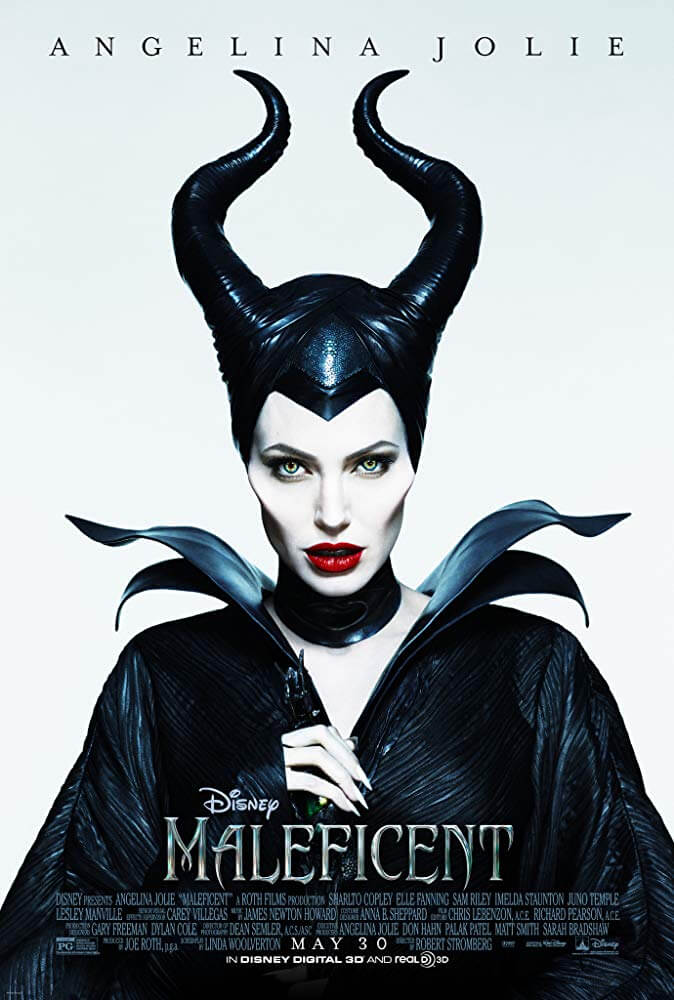Maleficent (2014)
A vengeful fairy is driven to curse an infant princess, only to discover that the child may be the one person who can restore peace to their troubled land.
 Angelina Jolie’s new movie Maleficent had to overcome some very high standards, as I am a long-time fan of Disney’s Sleeping Beauty (1959) for quite a while. The hand-painted backgrounds, character design, and beautiful music make it an exceptional movie and probably one of my favorite animated Disney movies.
Angelina Jolie’s new movie Maleficent had to overcome some very high standards, as I am a long-time fan of Disney’s Sleeping Beauty (1959) for quite a while. The hand-painted backgrounds, character design, and beautiful music make it an exceptional movie and probably one of my favorite animated Disney movies.
After watching Maleficent over the weekend, I think the movie started with a single idea: the kiss of true love that awakens Sleeping Beauty came not from Prince Phillip but from Maleficent. Apologizing for cursing Princess Aurora, she kisses Aurora, which breaks the curse and serves as the foundation for a good twist on repetitive romantic tropes. However, my issue is that the rest of the movie fell flat. The writers tried to keep Maleficent consistent with the original Sleeping Beauty story, but they created many inconsistencies.
The movie begins with Maleficent as a young fairy girl (although she had evil-looking horns and non-fairy-like wings) falling in love with a human boy. Their romantic feelings are quickly brushed aside, and the betrayal by this boy (who would later become King Stephan) doesn’t seem real or tragic. The audience is only given a flimsy, single-sentence explanation for the motivation behind the betrayal: He became greedy. And Maleficent’s fall from grace isn’t very sympathetic or believable.
The scene of the curse of Princess Aurora mirrors the original movie quite closely. The green fire surrounding the evil witch Maleficent, complete with a crow familiar in tow, was well-executed with dark imagery. However, soon after the curse and hiding of Aurora comes the next plot twist in the movie. Maleficent begins watching over Aurora because the three fairy Godmothers (Pink, Blue, and Green, whatever their names may be) are shown to be completely inept. There are jokes that the baby would die of neglect before the curse is complete. So Maleficent secretly cares for the baby behind the fairy Godmothers’ backs, which initiates a slow warming of her heart towards Aurora. Or that was the only explanation the writers could think up.
Most of the story seems to have been built around the simple idea that Maleficent is the one to free Aurora from her curse. From one perspective, I think it’s a great concept, as it shakes up some often-used fairy tale tropes. From another angle, however, this approach builds upon a concern I have. Hollywood has been on a fallen hero kick for the past decade, and I find it tiresome. The constant bashing of heroes leaves our society to believe that all acts of good are wasted because even our heroes are flawed. A friend of mine often remarks that Superman is a horrible character because he’s perfect. I happen to think that all the fallen heroes and anti-heroes in stories are just a way to worship what is broken and despair against life. In Maleficent, there is another twist on the fallen hero: instead of taking a hero and bringing them down, Disney has taken the most evil animated villain and made her a hero. However, she isn’t fully redeemed at the end of the movie, as it is plainly stated that Maleficent is both hero and villain. Had Maleficent been fully redeemed along with King Stephan, I would have liked this movie much more. However, for a film aimed at children (pre-teens, in my opinion), where none of the characters are redeemed, and the villain is declared to be a hero, I find it to be on shaky ground.
My final complaint could be added to nearly any Disney movie: the lack of decent male characters. Frozen had none, Maleficent had none, and I would bet that the new Cinderella will have none as well (there was a Cinderella teaser before Maleficent).
Even with all my complaining, Maleficent wasn’t a bad movie. The initial idea was strong, and if Maleficent and King Phillip had been fully redeemed at the end, this film would have been on my ‘to buy’ list. However, the story felt shoehorned to fit with the original movie, which would have been too difficult to do well.